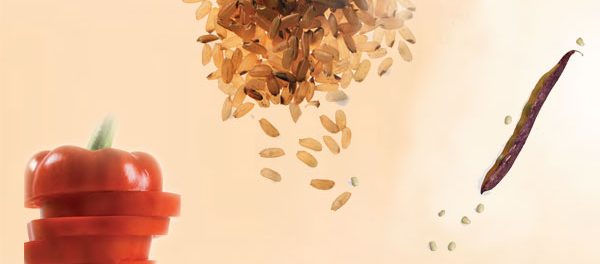Benefits of the Glycemic Index
By Johanna Burani, MS, RD, CDE
Your body needs carbohydrates throughout the day, every day. Why? Because carbs keep your body going. Foods like breads, breakfast cereals, rice, pasta, potatoes, corn, fruits, cookies, ice cream, milk and yogurts all contain carbs, which the body breaks down for energy in the form of glucose. Which carbs you choose and how much of them you eat can make a difference in how you feel and how well you manage your diabetes.
The carbs you eat at breakfast, lunch and dinner give your muscles glucose to walk and climb stairs, to go to work or to the store, to wash dishes or to dance to your favorite music. Carbs also allow your heart, lungs and other parts of your body to help keep your body moving the whole day. As you go through your day, your body uses your supply of glucose from one meal and then looks for another fill up at the next meal. When everything is working right, the supply of glucose is enough to meet the body’s demand for its energy needs.
Diabetes makes it harder for your body to get all the glucose it needs from your carbs. Your body may not make enough insulin to get the glucose out of your blood and into your cells. It could also be that your cells don’t let the glucose in. The types of carbs you choose can help with those problems.
The body digests some carbs faster than others. The quickly digested carbs (let’s call them “gushers”) cause a greater rise in blood glucose levels than slowly digested carbs (we’ll call these “tricklers”). Researchers have performed many tests and formed a list of gushers and tricklers, which has become known as the Glycemic Index (GI). The carbs with high GI values are the gushers. The carbs with low GI values are tricklers.
Gusher carbs
Gusher carbs release glucose out of the gut into the blood in a fast and steady stream. The result is a blood glucose spike. If there isn’t enough insulin to move the glucose out of the blood and into the cells, the glucose level will stay high for a long time. And if the cells won’t accept so much glucose at one time, the same thing will happen: There will be too much glucose staying in the blood.
Trickler carbs
Trickler carbs are digested more slowly than gushers. Smaller amounts of glucose enter the blood more slowly. This is because breaking down these carbs into glucose takes the body a longer time. A slower and smaller rise in glucose makes it easier for the body to have the right amount of insulin ready to bring the glucose into the cells. And the cells are ready to accept the glucose. Choosing trickler carbs makes it easier for the body with diabetes to manage blood glucose levels after eating.
The Glycemic Index
What makes these changes so helpful to diabetes control? Your blood glucose levels will not spike, and you will have more energy, feel fuller longer and eat less throughout the day. Better blood glucose control, less hunger and weight loss. That’s what’s good about the Glycemic Index.













